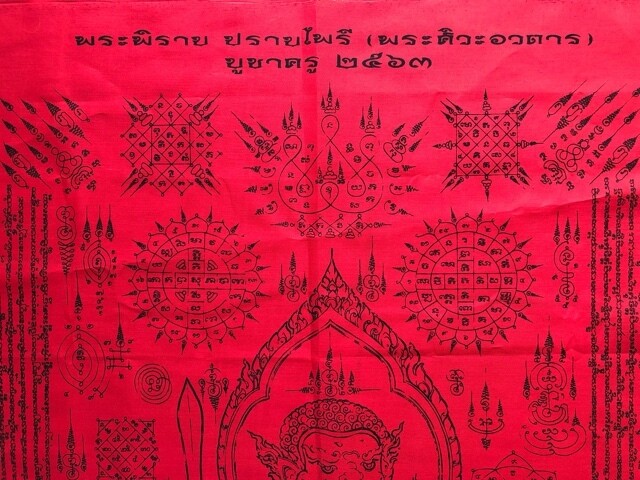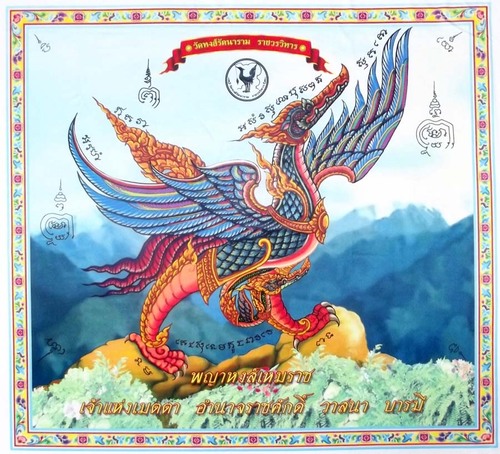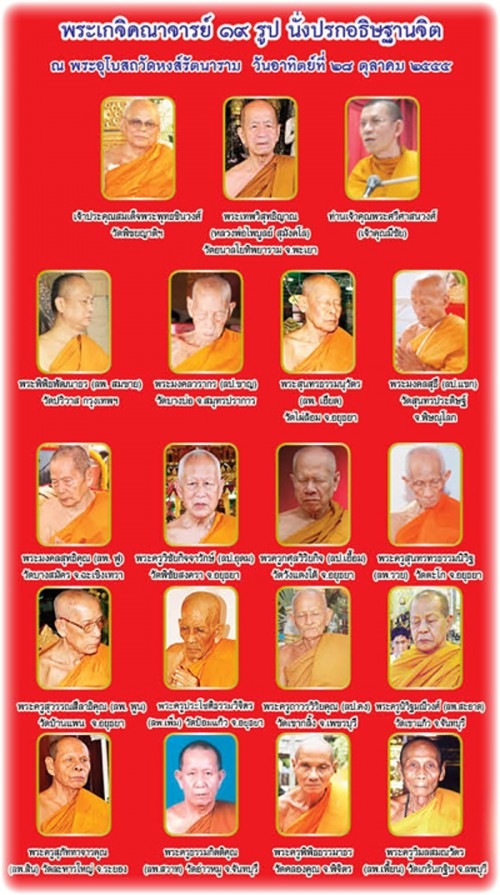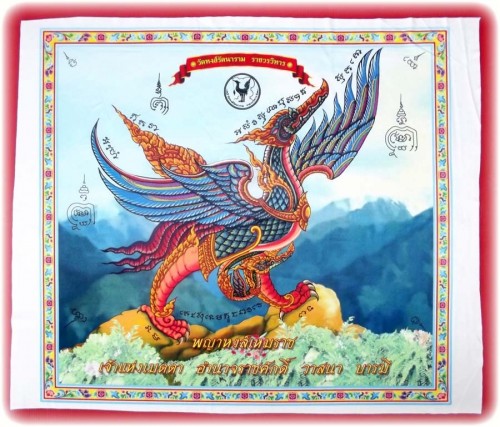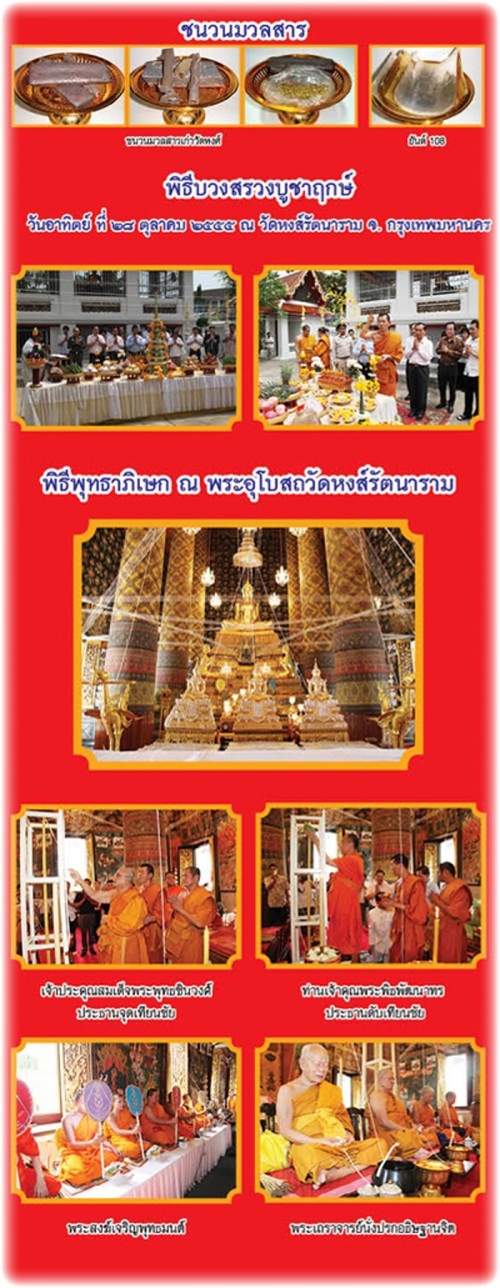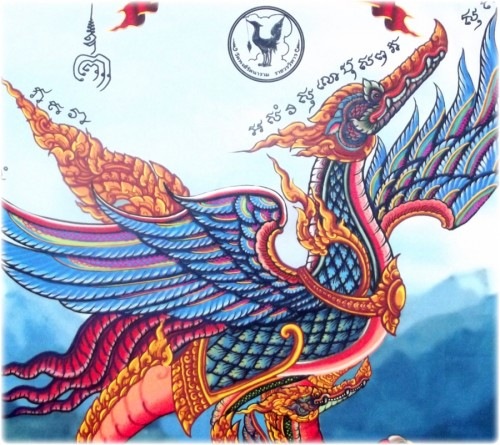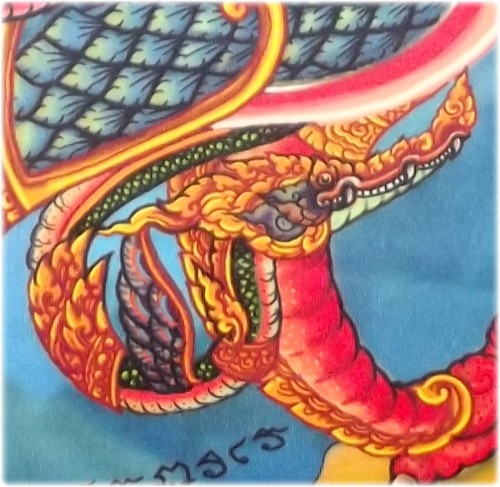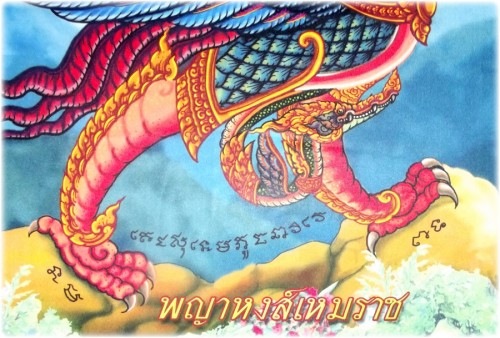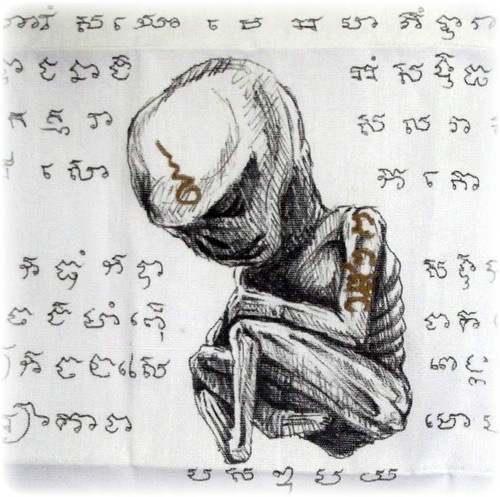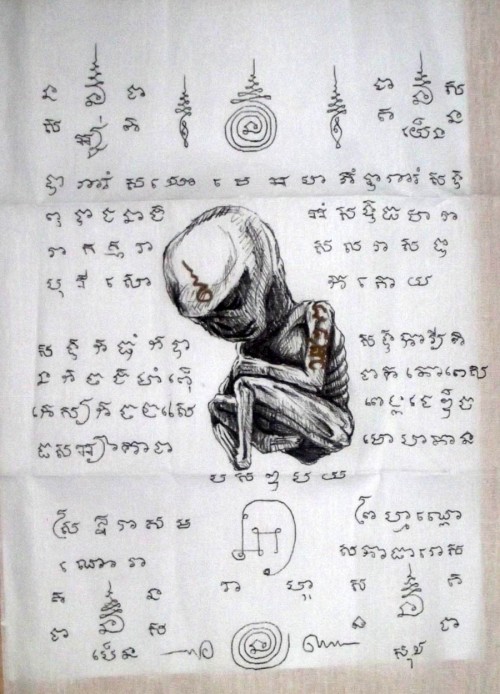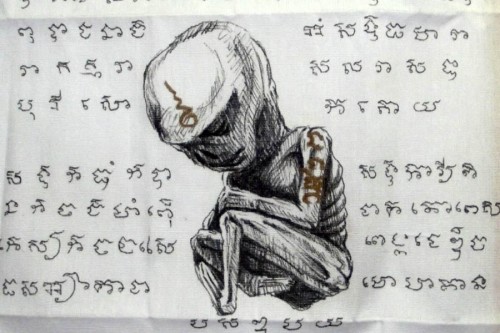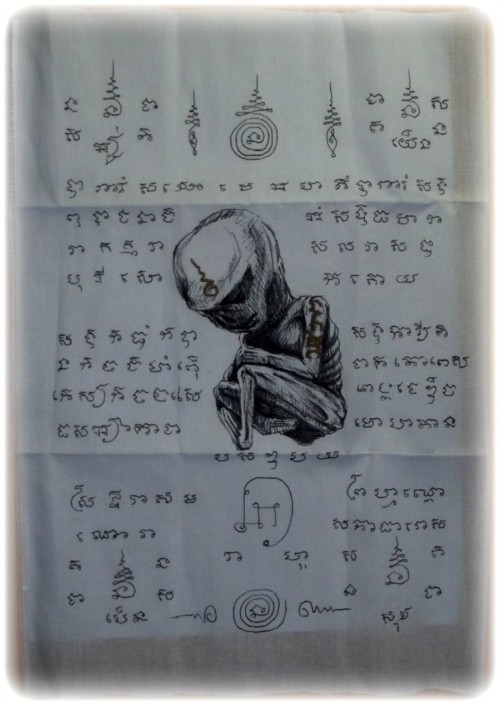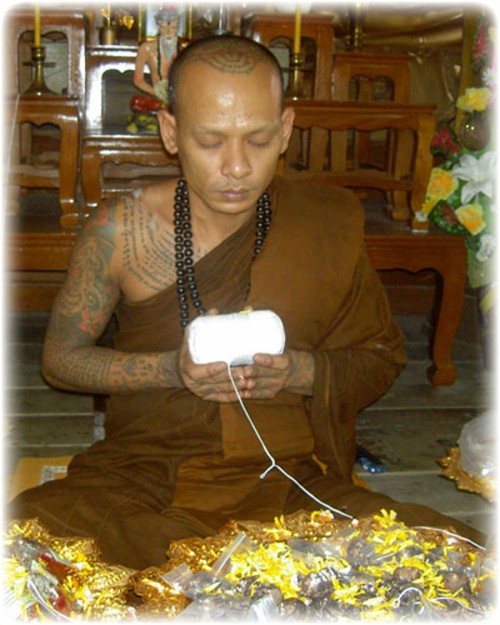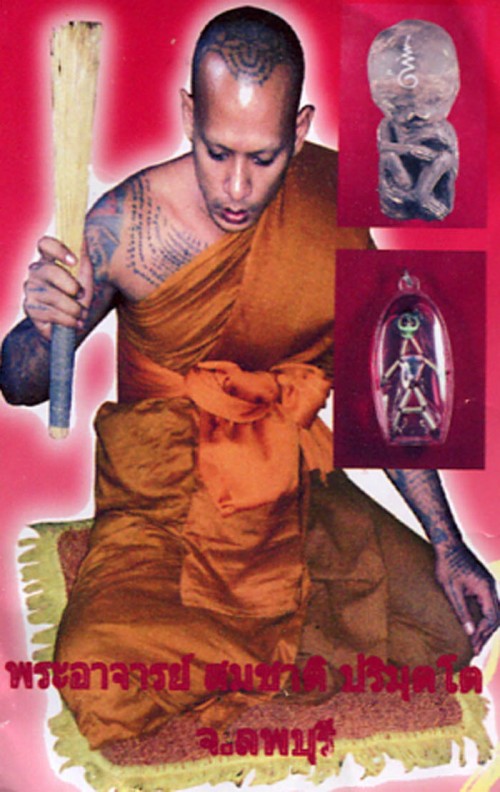The mystical Pha Yant Pra Pirab, a powerful deity and avatar of the Yaksa Hermit God, emerges from the ancient 2563 Wai Kroo Ceremony conducted by the revered Samnak Sak Yant Ajarn Kong Waet in Ang Tong, Thailand. Pra Pirab, a Yaksa Ruesi who traverses the realms of Vedic and Buddhist Cosmological Mythology, reigns as the Lord Yaksa Ruesi of All Astrologers. This awe-inspiring deity possesses inherent Maha Amnaj, the commanding power and influence, along with the potent Gae Aathan and Serm Yos powers.
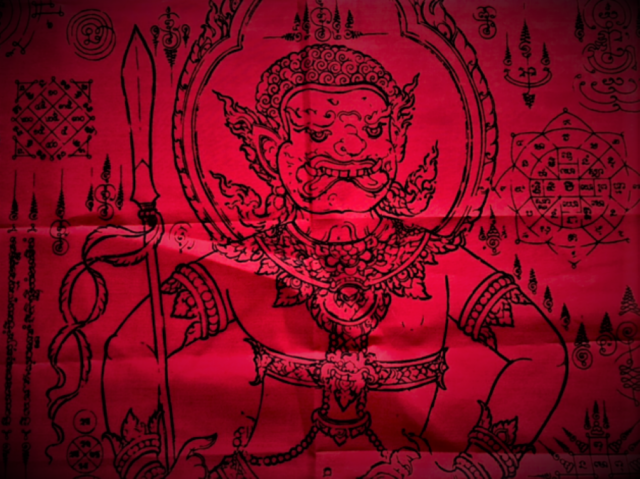
Pra Pirab assumes the role of a formidable guardian, guide, and protector for those immersed in the enigmatic Performing Arts Professions, including Musicians, Dancers, and Magicians. Moreover, Pra Pirab extends aid to individuals who have sought solace in other amulets but failed to receive favorable outcomes. It is believed that Pra Pirab can empower and unleash the magical potential of these amulets for those who struggle to harness their mystical properties.
Displayed upon a colossal Pha Yant, meticulously inked in black on vibrant red cloth, the image of Pra Pirab takes form. Standing with one leg raised and wielding a spear-like lance, Pra Pirab emanates an aura of invincibility. The cloth surrounding the deity’s image teems with an intricate tapestry of Sacred Yant (Yantra) spells and Sacred Na, brimming with Buddhist blessings, invocations, and secret incantations that summon the Yaksa Asura Demi-Gods. These enchantments command the assistance and protection of these celestial beings, clearing the path to success by swiftly removing obstacles and vanquishing adversaries.
The majestic Pha Yant, created with black ink on crimson fabric, bears the awe-inspiring image of Phra Pirab holding his spear/lance, standing with one leg raised. The surrounding surface of the Ynatra cloth teems with a multitude of Sacred Yant spells and Sacred Na. These sacred inscriptions contain Buddhist blessings, invocations of the Yaksa Asura Demi-Gods, and secret incantations that command their assistance and protection. With their aid, obstacles are swiftly swept aside, clearing the path to success.
Phra Pirab frequently graces the grand Wai Kroo ceremonies, serving as the official Mascot of the Wai Kroo of Performing Artists alongside other prominent figures in the celestial realm known as the ‘Duriya Taep,’ the Heavenly Devas of Performing Arts.
Ajarn San, a distinguished practitioner, inherited his Wicha from his erudite Grandfather, a knowledgeable Adept in Saiyasart who himself received Wicha from the venerable Luang Por Tuad. Ajarn San’s teacher was also a Sak yant Master, passing down this sacred knowledge. Furthermore, he acquired Wicha from his studies under the esteemed Luang Phu Hnay of Wat Ban Jaeng in Ayuttaya, and the Khmer Master Ajarn Bun, Luang Por Yib of Wat Bang Klang. Luang Phu Tammachote of Wat Kaay Ban Rajan Po Gai Dton and the lineage of Phu Suea Mahesworn, a renowned Outlaw turned revered Guru Monk, also bestowed their precious Wicha upon Ajarn San.
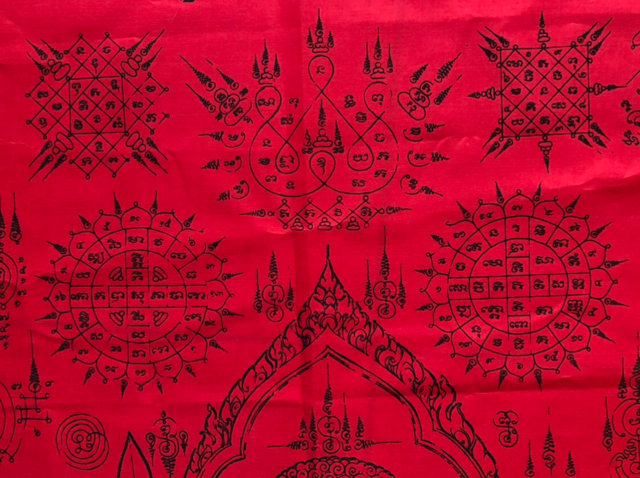
Phra Pirab manifests as a divine entity, embodying profound spiritual qualities and sacred attributes. Its countenance emanates a luminous divine light, adorned with ethereal shades of gold, dark purple, or glossy lacquer. Serenely enigmatic, its smile holds the secrets of wisdom, while its eyes, reminiscent of the ancient crocodile, bear profound insight. The teeth, gently rounded or intricately carved, symbolize a serene strength. Its venerable head, devoid of hair, signifies a transcendental detachment from worldly attachments.
In the realms of Vajrayana and Mahayana Buddhism, Phra Pirab manifests with numerous faces and countless hands, sometimes appearing with fifty-one faces and a hundred hands, all harmoniously engaged in divine activity. Its celestial form radiates an aura of spiritual power, standing amidst the sacred takinawat band, symbolizing its transcendental presence.
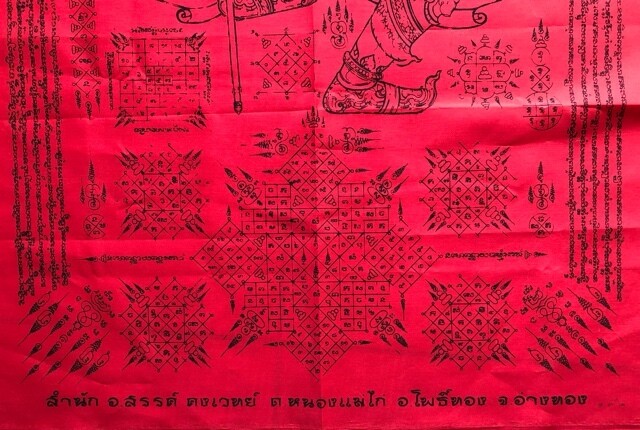
Originally known as Pra Bhairava, Phra Pirab represents a fierce incarnation of the great Shiva. As the profound teachings of Shiva, Narai, and other divine beings journey
Originally known as Pra Bhairava, Pra Pirap represents a ferocious incarnation of the great Shiva. When the profound teachings of Shiva and Narai, along with other divine beings, were introduced to the land of Thailand from India, Pra Bhairava was also revered and embraced. However, as the teachings merged with the local culture, the deity’s name gradually transformed into Pra Pirap, gaining prominence as the supreme master in both the realms of dance and music. Historical records from the Sukhothai period and the reign of King Chulalongkorn bear testament to this divine presence.
The sacred idol of Pra Pirap
Enshrined within its form are the blessings of “Pu Ong Pra Pirap,” the revered teacher, whose wisdom and grace lead seekers to the path of success Within this sacred manifestation. Pra Pirap is revered as an exalted teacher, a divine god, and a colossal being (an Avatar of Siva). However, due to the similarity of its name to a character from the Ramayana epic, Yak Virath, who is also portrayed as a colossal figure, the Supreme Patriarch and the character sometimes become conflated, leading to confusion.
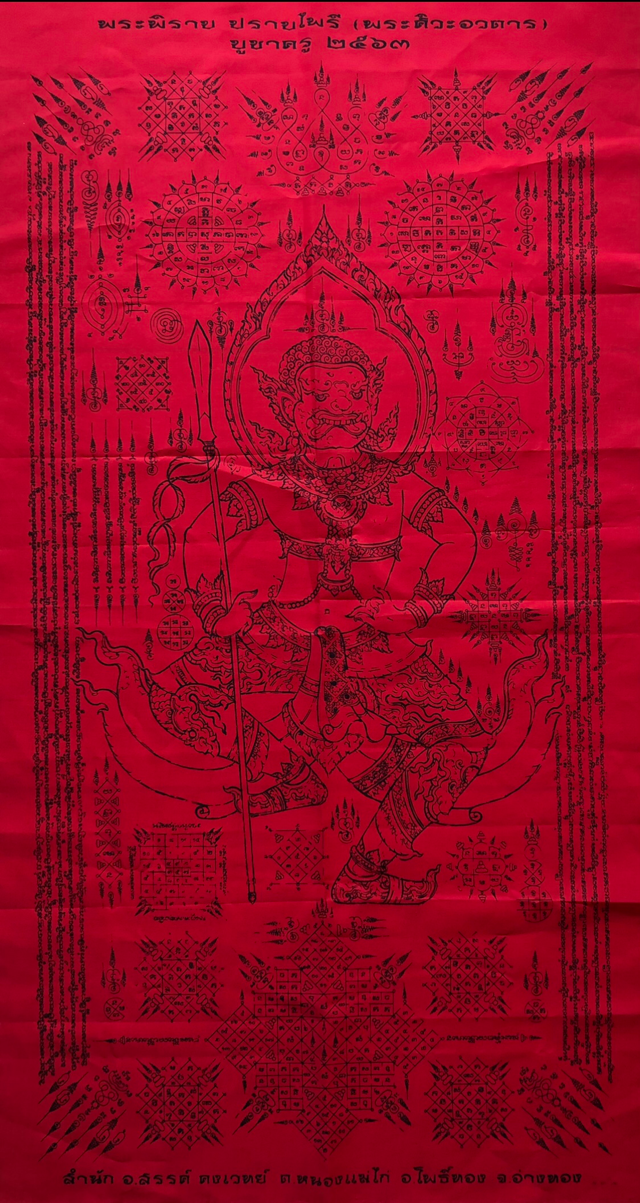
The Fine Arts Department has undertaken the noble task of documenting the history of Pra Pirap, publishing scholarly works, and disseminating knowledge to foster a deeper understanding among the masses. Yet, the comprehensive awareness and understanding of this deity remain a relatively uncharted realm in the realm of general knowledge.
